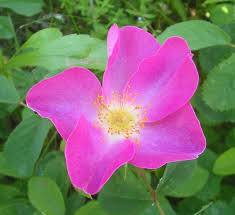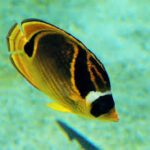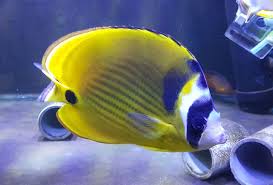
Rosa gallica, renowned for its historical significance and exquisite blooms, follows a distinct flowering time and growth cycle that captivates gardeners and enthusiasts alike. In this comprehensive guide, we delve into the intricacies of the flowering period and development stages of Rosa gallica, shedding light on its fascinating growth patterns and blooming habits.
#### Growth Cycle
##### 1. Dormancy
**Winter Rest:** During the winter months, Rosa gallica enters a period of dormancy characterized by reduced growth and metabolic activity. Deciduous foliage may shed, and the plant’s energy is directed towards root development and internal processes.
**Environmental Influence:** The onset of dormancy is influenced by environmental factors such as temperature and day length. Colder temperatures and shorter days signal to the plant that it is time to conserve energy and prepare for the dormant period.
##### 2. Bud Break
**Spring Awakening:** As temperatures warm and daylight hours lengthen, Rosa gallica emerges from dormancy with the arrival of spring. Buds swell and break, revealing new growth and signaling the start of the growing season.
**New Shoots:** Fresh green shoots emerge from dormant buds, unfurling to reveal tender leaves and stems. The plant redirects energy towards foliar expansion and photosynthesis, fueling growth and development.
##### 3. Vegetative Growth
**Leaf Development:** Rosa gallica prioritizes leaf production and vegetative growth during the early stages of the growth cycle. Lush foliage emerges from the stems, providing a verdant backdrop for the forthcoming blooms.
**Stem Elongation:** As the plant continues to grow, stems elongate, reaching towards the sun in pursuit of light and energy. The plant’s architecture takes shape as it forms a bushy habit or climbing structure, depending on the cultivar and growth habit.
#### Flowering Time
##### 1. Bud Formation
**Bud Initiation:** In late spring to early summer, Rosa gallica initiates the formation of flower buds in response to environmental cues such as temperature and day length. Buds develop at the terminals of new growth or along lateral branches, ready to bloom in the coming weeks.
**Inflorescence Types:** Rosa gallica produces solitary or clustered flowers, depending on the cultivar and genetic traits. Each bud contains the potential for a single bloom or a cluster of multiple flowers, adding diversity to the plant’s floral display.
##### 2. Bloom Time
**Floral Display:** The peak flowering period for Rosa gallica typically occurs in late spring to early summer, although the exact timing may vary depending on geographic location and climate conditions. Blooms unfurl in a symphony of colors, ranging from vibrant reds and pinks to delicate whites and purples.
**Duration:** Individual blooms may last for several days to a week, depending on environmental factors and cultivar characteristics. Rosa gallica’s timeless beauty and fragrant blossoms attract pollinators and admirers alike, enriching the garden with their presence.
#### Conclusion
Understanding the flowering time and growth cycle of Rosa gallica provides valuable insights into the plant’s life cycle and seasonal rhythms. From the dormancy of winter to the vibrant blooms of spring and summer, Rosa gallica captivates with its timeless beauty and enduring charm. In the next part of this guide, we will explore the cultural practices and care techniques that optimize flowering and promote the overall health and vitality of Rosa gallica, allowing gardeners to enjoy its splendor year after year.
### Flowering Time and Growth Cycle of Rosa Gallica: Understanding the Bloom Time and Development Cycle of Rosa Gallica (Part 2)
Continuing our exploration of the flowering time and growth cycle of Rosa gallica, we delve deeper into the factors influencing bloom time and development stages of this iconic rose species. From environmental cues to cultural practices, understanding these dynamics empowers gardeners to optimize the blooming period and nurture the health and vitality of Rosa gallica.
#### Environmental Factors
##### 1. Temperature
**Impact on Flowering:** Temperature plays a critical role in determining the timing of Rosa gallica’s flowering. Cool spring temperatures followed by gradual warming promote steady bud development and a prolonged blooming period.
**Chilling Requirements:** Some Rosa gallica cultivars require a period of cold temperatures, known as chilling requirements, to break dormancy and initiate flowering. Adequate exposure to winter chill hours ensures robust bud formation and a bountiful floral display.
##### 2. Day Length
**Photoperiod Sensitivity:** Rosa gallica exhibits sensitivity to changes in day length, with variations in photoperiod influencing flowering time. Longer daylight hours in spring stimulate bud development and accelerate the onset of blooming.
**Induction of Flowering:** Shortening day length in late summer and early autumn triggers the transition to dormancy, signaling to Rosa gallica that it is time to cease flowering and prepare for winter rest. This photoperiodic response helps synchronize the plant’s growth cycle with seasonal changes.
#### Cultural Practices
##### 1. Pruning
**Timing and Technique:** Pruning Rosa gallica at the appropriate time and using proper techniques can influence flowering time and bloom quality. Prune in late winter to early spring before new growth emerges, removing dead or diseased wood and shaping the plant to encourage airflow and sunlight penetration.
**Promoting Flowering:** Pruning stimulates new growth and encourages the production of flowering shoots in Rosa gallica. Removing spent blooms and shaping the plant’s structure redirects energy towards bud formation and enhances the overall floral display.
##### 2. Fertilization
**Nutrient Balance:** Providing Rosa gallica with balanced nutrition throughout the growing season supports healthy growth and flowering. Apply a slow-release, balanced fertilizer in early spring to provide essential nutrients without stimulating excessive vegetative growth.
**Avoiding Excess Nitrogen:** High levels of nitrogen fertilizer can promote lush foliage at the expense of flowering in Rosa gallica. Choose a fertilizer with a lower nitrogen content to prevent excessive vegetative growth and encourage robust bud formation.
#### Watering Practices
##### 1. Moisture Management
**Consistent Moisture:** Maintain consistent soil moisture levels during the growing season to support optimal growth and flowering in Rosa gallica. Water deeply and infrequently, allowing the soil to dry slightly between waterings to prevent waterlogged conditions.
**Avoiding Drought Stress:** Adequate moisture is essential during bud development and blooming to prevent drought stress and ensure the longevity of Rosa gallica’s flowers. Mulching around the base of the plant helps retain soil moisture and regulate temperature fluctuations.
#### Conclusion
The flowering time and growth cycle of Rosa gallica are influenced by a combination of environmental factors and cultural practices, each playing a vital role in shaping the plant’s development and blooming habits. By understanding the interplay between temperature, day length, pruning, fertilization, and watering practices, gardeners can optimize the blooming period and foster healthy, vibrant growth in Rosa gallica. With careful attention to these dynamics, Rosa gallica will reward gardeners with an abundance of exquisite blooms and enduring beauty season after season.










